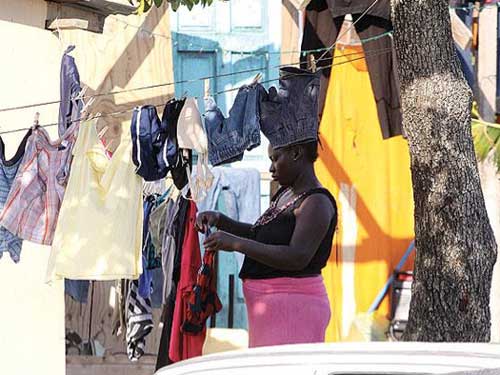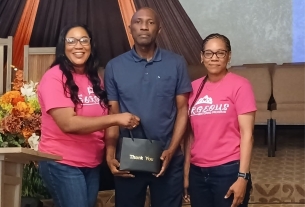 An emerging trend in shantytowns is the increasing number of Bahamians or people who claim to be Bahamian, who live in or frequent these towns, according to a newly released report.
An emerging trend in shantytowns is the increasing number of Bahamians or people who claim to be Bahamian, who live in or frequent these towns, according to a newly released report.
“Many of the long-term shanty town occupants express that new arrivals do not have the same reverence for proper hygiene and respect for law and order, resulting in the decline of the towns,” said the 2013 “Shanty Town Project” completed by researchers in the Department of Environmental Health.
According to the report, there are at least 15 shantytowns in New Providence. It noted that communities have also developed in Abaco, Andros, Eleuthera and Exuma. The report said Abaco is home to the biggest shantytown population in the Family Islands which were highlighted.
Shantytowns in Abaco include Sandbanks, The Mud and The Peas, commonly referred to as Pigeon Peas.
Combined, those three communities have more than 1,000 homes, according to the report.
Researchers said there are 124 homes or residences in Sandbanks. Only two were identified as having wells piped into the houses.
There are also six visible commercial shops.
In The Peas, there are 300 residences and 30 commercial shops.
Of those homes, 150 had septic tanks and 15 made use of outside toilets.
In The Mud, which is the biggest of the three predominantly Haitian communities, there are 600 residences.
There are also 45 commercial shops, the report said. There are 100 septic tanks and six outside toilets.
In San Andros, a shanty town with 31 structures was identified. According to the report, some structures consisted of up to six sections.
Researchers said it was difficult to estimate the population of the towns as many of the residents were at work or on farms when the survey was conducted.
In Eleuthera, shantytowns were identified in Spanish Wells, where just over 80 people live in wooden structures, the report said.
The report notes that the majority of the residences have improper septic tanks or outside toilets. The report also noted that there is insufficient garbage storage bins and refuse accumulation.
In Blackwood, North Eleuthera, there are 16 wooden structures, which are occupied by 23 adults and 21 children, according to the report.
“Every house in Blackwood has electrical supply from BEC,” the report said.
“There is no municipal water supply in Blackwood and therefore owners of the properties have provided private wells to access water. The ground water supply is hard and residents informed that the well water is used for cleaning, washing, bathing and cooking. Bottled water is used for drinking.”
A shantytown was also identified on Russell Island. More than a dozen wooden structures were identified in that area, according to the report.
Researchers said St. George’s Power Company supplies power for Russell Island and Spanish Wells. Illegal communities were also identified in Wemyss Bight and Green Castle. In George Town, Exuma, one shanty town was identified in Cooper’s Yard.
By Krystel Rolle
Guardian Staff Reporter



